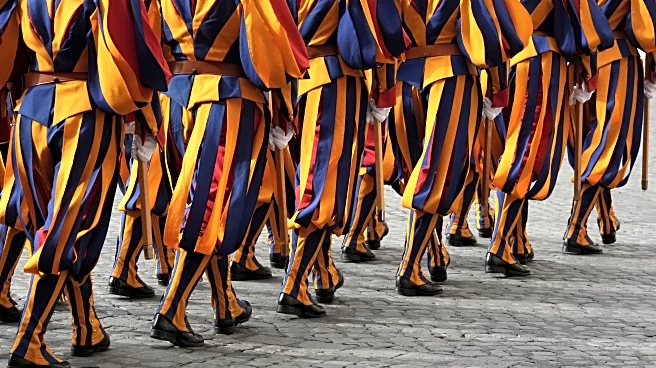What's Happening?
The Library of Congress has made the Borso d'Este Bible available as a complete PDF on its website. This Bible, often referred to as the 'Mona Lisa of Illuminated Manuscripts,' is renowned for its richly
illuminated leaves featuring painted vignettes that depict scenes from the Bible, historical events, and nature. The Bible is currently on display at the Italian Senate in Rome, where visitors can interact with a digital experience to view its images at ultra-high resolution. The Bible was commissioned by Duke Borso d'Este in the 15th century and is considered one of the most beautiful books in the world.
Why It's Important?
The availability of the Borso d'Este Bible as a PDF on the Library of Congress website allows broader access to a historically significant artifact that is usually kept in a safe and rarely seen by the public. This move democratizes access to cultural heritage, enabling scholars, historians, and the general public to study and appreciate the intricate artistry and historical context of the manuscript. The Bible's display in Rome as part of the Vatican's Holy Year celebrations highlights its cultural and religious significance, drawing attention to the rich history of illuminated manuscripts.
What's Next?
The Bible will remain on display in the Italian Senate until January 16, allowing visitors to experience its beauty and historical significance firsthand. The digital availability of the manuscript may inspire further scholarly research and public interest in illuminated manuscripts and Renaissance art. The Library of Congress's initiative to provide digital access to such artifacts could lead to similar efforts for other historical documents, enhancing public engagement with cultural heritage.
Beyond the Headlines
The Borso d'Este Bible's digital availability raises questions about the preservation and accessibility of cultural heritage in the digital age. While physical artifacts are subject to deterioration, digital versions can be preserved indefinitely, allowing for continued study and appreciation. This development also highlights the role of technology in bridging the gap between historical artifacts and modern audiences, potentially transforming how we interact with and understand our cultural past.












